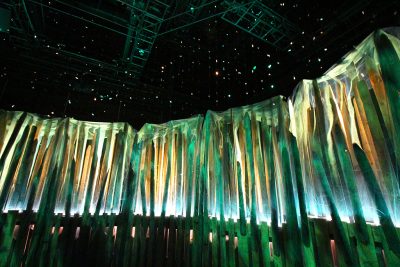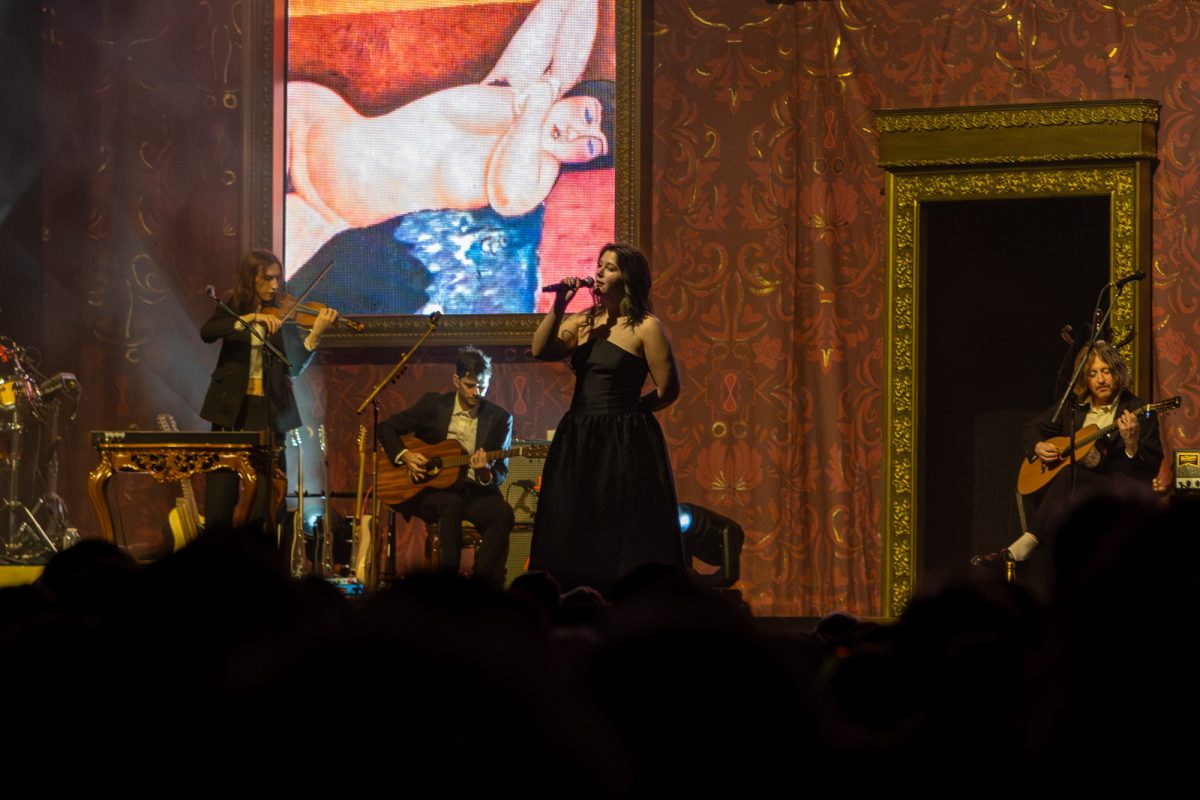In theatrical performances, acting steals the show — leaving lighting and sound underappreciated. But “Panthera tigris” —- a mixed-media thesis exhibition by Boston University School of Theatre 2014 BFA alumna and MFA candidate Kayleigha Zawacki — invites viewers to observe the magic of theatrical technology while delivering a profound message on wildlife preservation and conservation.

The show, which ran for free every thirty minutes at Joan and Edgar Booth Theater, was available for students Sept. 3 to Sept. 4, and Sept. 7 to Sept. 9 — the last showings available from 3 p.m. to 7 p.m.. The project was inspired by endangered tigers, their conservation and sustainability, Zawacki wrote on the exhibition’s website.
“Panthera tigris” is Zawacki’s “culminating project for [an] MFA in lighting design, also from Boston University. Through my artistic practice, I explore natural themes such as sustainability, wildlife conservation, and the preservation of our natural spaces. I also tell stories about humanity and contemporary social issues,” Zawacki wrote.
The experience starts as follows: step into Booth Theater to begin the “art experience in a theatrical context,” and a tour guide is already waiting at the front door. As the participants walk into a dark room, the guide asks the viewers to consider their past experiences with the “jungle,” eliciting curiosity from the audience. In an enclosed circle surrounded by dazzling lights and dreamy gauzes, delicately crafted glasses resemble a mysterious forest under a starry night.
Using simple materials, lighting designer Zawacki masterfully creates an iridescent palace of stars. Under the feet of the audience, mosaic mirrors infinitely extend the forest and elevate the space. In the background, whispers of frogs, trees and the wind place audiences in the middle of a peaceful jungle.
As viewers find comfort in the serenity, a sudden beat of drums captures their attention to the center of the space, where a striking, golden tiger slowly emerges from the darkness. With upbeat and drum-based music, the tiger strides across the space freely. The motion and energy of the tiger resonate with the sound, illuminating the vibrant life of the jungle. The 360-degree installation complements the theme as it creates an immersive environment for viewers to fully appreciate the tiger’s vitality and playfulness.
The tiger, Zawacki’s favorite animal, is in danger of being extinct. On the project website, Zawacki writes that only 3,900 tigers remain in the wild today, which is 97% fewer than 100 years ago. The website also includes a page to resources to donate and support the endangered big cat.
Gradually, the music slows down and the tiger rests under the stars. The peacefulness guides viewers to enjoy a moment of relaxation, allowing them to feel the soothing effect of nature. Suddenly, a clash of human steps and noises breaks the silence. As the sound comes closer, the tiger wakes and appears terrified. Suddenly, the dark space turns into a sharply bright room: the stars vanish, replaced by glaring white light bulbs that signify human intrusion. The show concludes with an afflicting scene of human exploitation, leaving viewers to ponder the significance of forest preservation.
As a seasoned lighting designer, Zawacki converted reclaimed pallets and wooden fencing into a vivid stage without any performers. Besides beautiful light arrangements, Zawacki takes a more introspective approach to raise awareness on wildlife preservation, which distinguishes the exhibition from other commercial art installations.
Zawacki’s thoughtful transformation of recycled materials also elucidates the artist’s statement. By consciously selecting materials for “Panthera tigris,” Zawacki effectively promotes sustainability in art through the reflective installation.
Stepping out of the performative installation, the liveliness of the tiger and brutality of the human invasion linger in viewers’ minds. Through the mesmerizing lights and the uplifting sounds, Zawacki conveys a message that lasts — besides marveling at the beauty of wildlife and forests, humans should take responsibility to guard the tiger’s existence.






























































































































